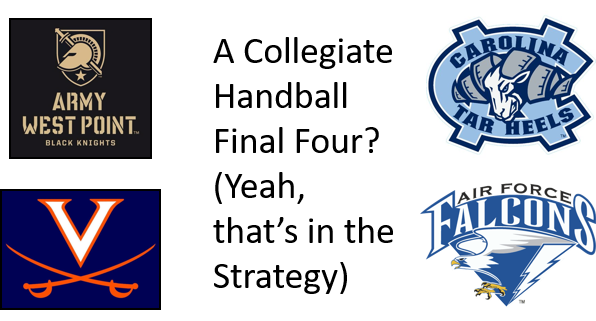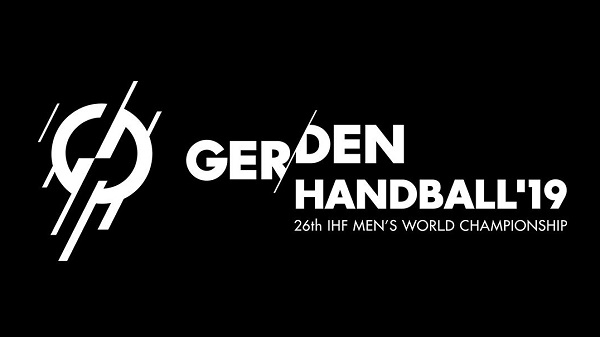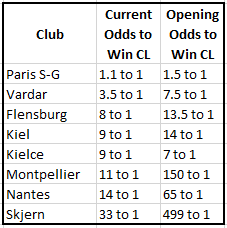
Now that we’ve captured the demographics of our really, really small talent pool (Part 2), let’s take a deep dive into the likelihood of whether such a small cohort, properly trained and developed can be competitive against the big dogs.
I’ve seen a lot of movies in my life, but without hesitation or a second thought I’ll state that Hoosiers is my all-time favorite. The movie tells the story of a small town high school basketball team that takes on the big schools and wins the 1952 Indiana State Title. It’s certainly not the greatest movie ever made, but for sure no movie could better capture a time in my life and something that I was so incredibly passionate about: Small town high school basketball. I grew up in a different state (Iowa) and a different era (the 1980s) but it hits home never the less. The film is fictional, but it drew inspiration from a true story, the 1954 Milan High School Basketball team. Even more impressive and less well known is the 1937 Melrose, IA team (where my grandmother went to school) which won with just 66 students in the school.
So, if a tiny high school with an enrollment of just 161 students can win a state basketball title beating schools 10 times larger, can USA Team Handball accomplish something similar. Can U.S. National teams that are mostly Expatica America with a few stateside additions be competitive? Win medals or titles?
Answer: Yes, it’s possible. Unfortunately, though, it’s just not very likely.
The Very Challenging Math Behind Small Talent Pools
So, why is the math so hard? Well, because we are not talking about one small town vs several big cities (one at a time). We’re actually talking about one small town vs several countries. The equivalent isn’t Hickory High vs South Bend Central. The equivalent is actually Hickory High vs an Indiana big school all-star team. Yes, take the best player off South Bend Central and add 11 players from a selection of all the big schools in Indiana. Jimmy Chitwood could still ball against that team, but his supporting cast would have been overwhelmed. Maybe, good ol’ Hickory could still pull off one miraculous upset, but the next match would then be against the Illinois all-star team. Again, anything is possible… But, it’s just not probable.
All things being equal the chances of a great athlete being born in a particular town or country are directly proportional to the size of that town or country. The bigger the city, the bigger the country, well, then the better odds you’re going to have. Of course, not all things are equal. Raw talent is perhaps, but some towns, some countries can buck those odds with excellent talent identification and training.
Norway (Iowa), Iceland and the Faroe Islands
Case in point, I’ll bring up another less well known movie, “The Final Season” about Norway… Iowa. Yes, a small town of 545 citizens that won 20 state baseball championships. The school was so small their graduating classes were only around 25 students, but virtually every boy played baseball and they had a really good coach who produced several college/minor league players and 3 major leaguers. And, because they were such a small school they only played two sports, baseball and basketball resulting in specialization that other big schools couldn’t take advantage of in 80s and 90s.
On a larger scale, the Iceland men have done roughly the same thing with handball over the years. They almost always qualify for the World Championships and European Championships and they’ve qualified for 7 of 12 Olympic competitions. The high water mark is their silver medal at the 2008 Olympics. Quite an accomplishment for a nation of just 360,000 people competing against much larger nations. And, make no mistake about it, even if handball is really popular in Iceland, meaning a far greater percentage of their youth athletes are going to take up handball they are still dealing with a far smaller player pool than most handball nations.
Then, there’s the Faroe Islands with just 52,000 people. Handball is also popular there, but they’ve never come close to qualifying for the World Championships or European Championships. They have, however, shown some real promising signs recently. They won the first two IHF Emerging Nations Championships in 2015 and 2017. And, this past summer their U17 National Team shocked the handball world by winning the first ever European Open Championship for this age group. And, it was not a fluke, they clearly were the best team at this tournament, beating Norway, Spain, Hungary, Belarus and Sweden. And beating hosts, Sweden, convincingly 36-29 in the final no less (Match video). Holy crap, is leading scorer and Tourney MVP, Elias Ellefsen a Skipagotu, the Jimmy Chitwood of handball?
So, I don’t want to take anything away from the young Faroe Islands team. Winning this tournament was a tremendous accomplishment. No one is ever going to take that away from them. But, are the Faroe Islands now on a path to future Sr. Team titles? I’m thinking probably not. The team that won that tournament is truly a team. They’ve got some solid players, but I suspect as they move up to U19 and U21 tournaments the bigger nations are going to take advantage of their larger talent pool and will out talent them physically. And, at the Sr National Team level with age restrictions removed? Well, the gap will just increase. I think the Faroes will be competitive. Maybe, with the expanded format they will even have a shot at qualifying for the European Championships. But, competing for titles? Really unlikely, but believe me it would truly be awesome to be totally wrong here.
Golden Generations and the Team Photo on the Wall
The other way that towns and nations with a small population pool can have success is with the happenstance of a so called “Golden Generation”. Every town is going to have a good player every 10 years or so, but if you get lucky you might get two or three good players born at roughly the same time. Or maybe even hit the jackpot with an entire team. Combine that with decent coaching, a bit of luck and well… you get to put a State Champion photo up in the high school gym or win a U17 European title. Or even get Hollywood to make a movie about you. It can and does happen, it just doesn’t happen very often. That’s what makes it special or golden.
Is the current crop of Handball American Expats a golden generation? Having followed USA Handball pretty closely for 30 years or so, I could say “yes or no… depending on your perspective”.
With the U.S. Men there is a solid core of young Expat players aged 20-23 that could be mainstays on our Sr National Team for a decade. The U.S. has never had that many talented players at that age level. Ever. Not even close. (Heck, historically many of our national team players didn’t even start playing handball until age 22 or 23). From a comparative historical perspective it’s clearly a golden generation. But, if one wants to compare that same cohort to the talent of other handball nations it’s less golden. More accurately, it’s a collection of players that one might expect to see in the German 2nd Division. Such a team can be competitive and could win a NORCA title and qualify for the World Championships. I’ve got my doubts, though as to whether they can beat Argentina and Brazil to qualify for an Olympics. And, as a side point that points to Expatica Americana having a Golden Generation: Historically I would assess that a 3rd or 4th division side is what we might usually expect from such a small pool of talent to draw from.
With the U.S. Women there are simply not enough Expats available to field a team similar to the men (e.g. mostly expats with a handful of stateside players to round out the roster). On a historical basis, though, more expats then ever before are being used and they are playing keying roles. But unless there are a lot of expat players hiding out somewhere in Europe we won’t be contemplating an Expat first strategy with the U.S. Women anytime soon.
The Big Picture
It should be clear now that Expatica American is and isn’t.
What Expatica Americana is:
- A key cohort of our national teams
- A cohort that is very, very small in size
- A cohort that will ebb and flow in terms of quality (sometimes dramatically)
- A cohort that sometimes (all by itself) will allow the U.S. to put together a respectable national team
What Expatica Americana isn’t:
- A cohort that all by itself is very, very unlikely to carry USA national teams to greatness
- A panacea for the lack of stateside grass roots development
So, I would say that’s a pretty thorough overview of our Handball American Expats. I’ve covered what it means philosophically, their demographics and what can be realistically expected from this key cohort both now and going forward. Time to move on and think more broadly in terms of how the U.S. should strategically develop its national teams going forward.












